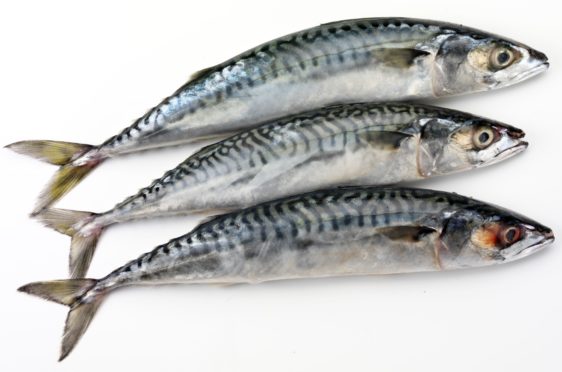
Mackerel may be unexpected salmon killers as they have a voracious appetite and their numbers could far outstrip official estimates, according to a leading scientist.
The fish – a favourite of healthy eaters because of its oily flesh – pose a threat to young salmon, called smolts.
They also compete for food and hoover up huge quantities of the plankton, amphipods and krill needed by juvenile salmon to fuel their long migration.
Prominent fisheries expert Jens Christian Holst said mackerel are underestimated as a predator despite swimming like “torpedoes” and forming huge shoals similar to pests such as locusts.
He said: “When smolts come into the ocean they are really hunted down. The mackerel is a tremendous feeder. They are incredibly opportunistic. They are a bit like grasshoppers. They spread all over the ocean.
“And from the very moment they enter the sea, the salmon smolts are potential prey for the starving mackerel. You have the biggest concentration of mackerel in the migration path of the smolts.
“A large mackerel of 50cm can eat a smolt of 20cm. In my view the mackerel is the major player in the decline of salmon.”
British mackerel was stripped of its sustainable status in March by the Marine Stewardship Council because of overfishing.
Official estimates from the International Council for the Exploration of the Sea (ICES) in 2017 put the number of mackerel in the North Atlantic at nine billion.
Dr Holst has now called for further research on mackerel numbers as he believes there were at least 57 billion – six times more than suggested by official figures.
The former scientist at the Institute of Marine Research in Bergen, Norway, has been studying pelagic fish like mackerel and herring for decades.
According to Denmark-based ICES, mackerel stocks are difficult to assess accurately.
It said: “The large stock size and highly dynamic nature of its migration makes it difficult and expensive to conduct surveys.”

Enjoy the convenience of having The Sunday Post delivered as a digital ePaper straight to your smartphone, tablet or computer.
Subscribe for only £5.49 a month and enjoy all the benefits of the printed paper as a digital replica.
Subscribe